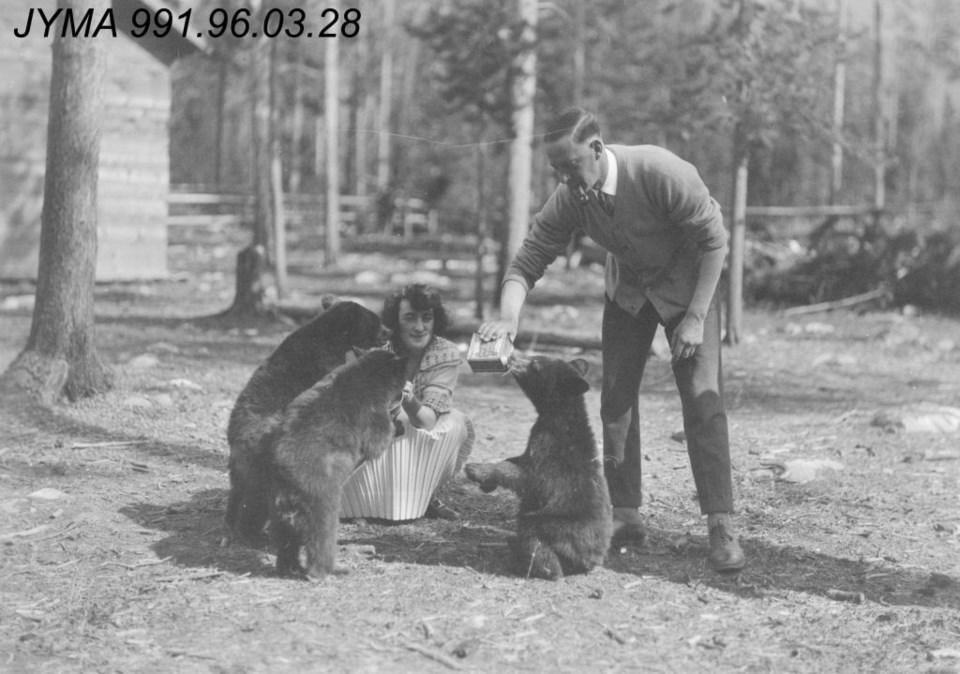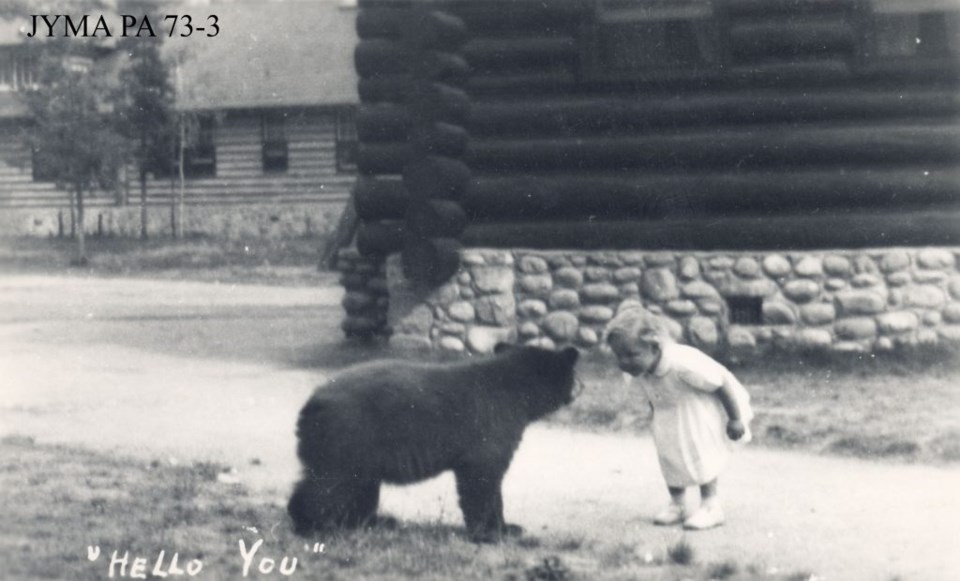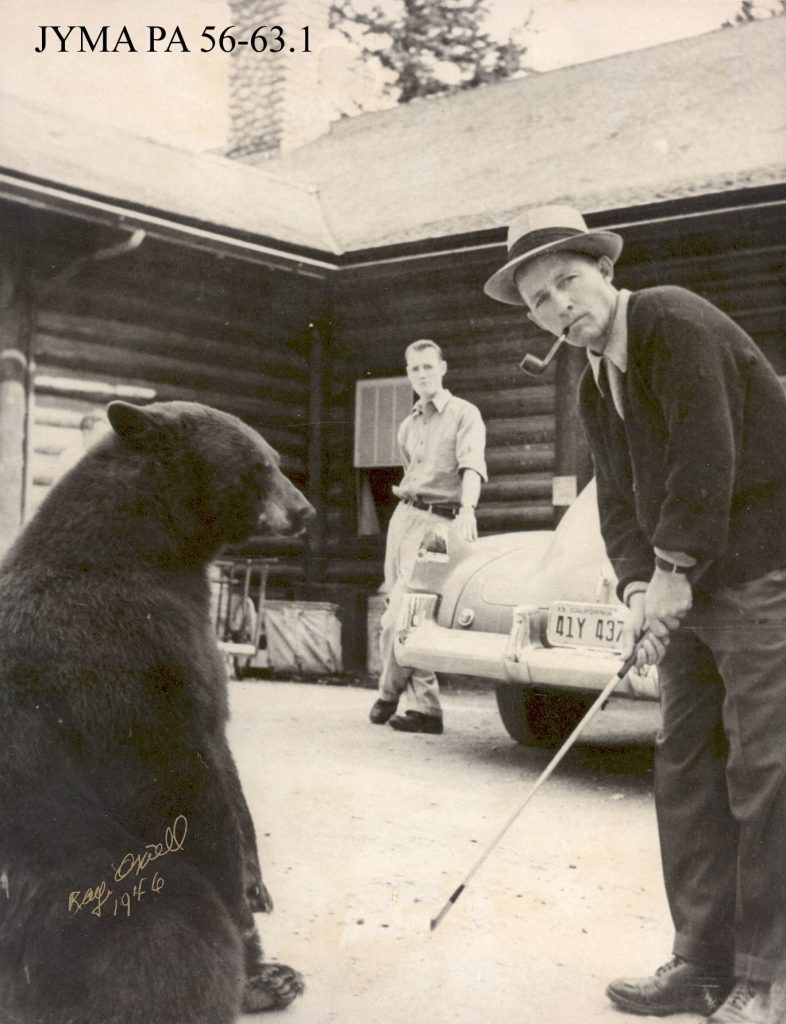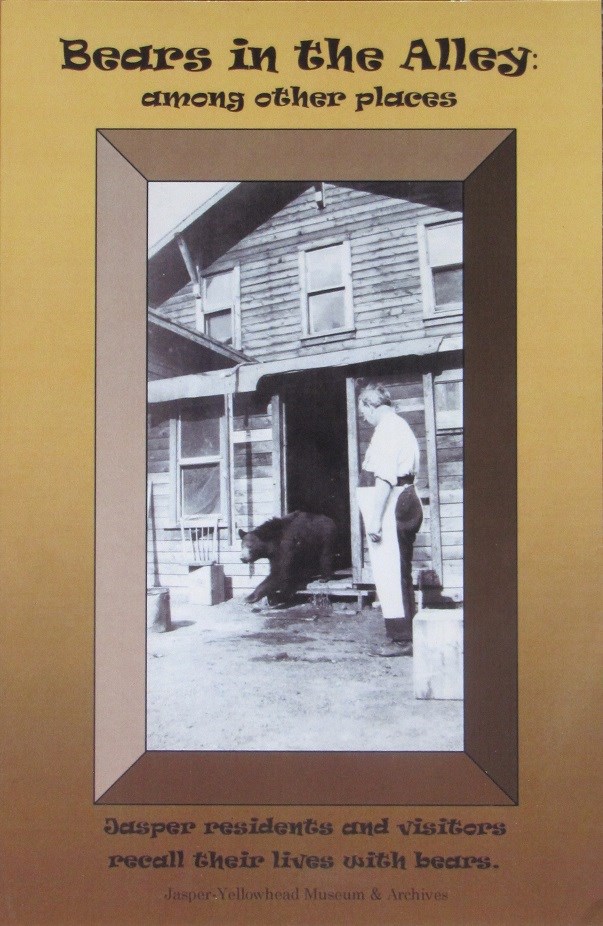
The entire world recognizes Jasper as a place to see bears.
Often they do not realize what it is like for residents to live with bears in their townsite, back alley or even in their own back yards.
Life with bears means ignoring them, chasing them and sometimes tripping over them in the dark.
The Indigenous people who have been traveling through the Athabasca Valley for the last 10,000 years hunted bears for their meat for food, skins to keep them warm and bones for tools.
David Thompson was probably one of the first to record an encounter with a bear in this region when he passed through here in the winter of 1810/11.
By the 1800s some of the Indigenous and Metis families established homesteads in the Athabasca Valley and each had some place where garbage was burned or buried and problems with bears were rare.
With the arrival of the railway, thousands of men, horses and machinery travelled through a narrow corridor of the Athabasca Valley, building camps to support the business of moving people and goods across Canada.
Some of these camps were short lived but the garbage remained - sometimes burned or buried but often tossed over river banks.
Railway sections and stations were established along the track and more people resulted in more garbage.
By the early 1900s pieces of machinery, tin cans, broken glass, wooden crates, discarded clothing all piled up in regular locations in the newly formed Jasper Forest Park.
Because goods were being shipped by rail, they were more easily obtained and more likely to be packaged. This meant more garbage and more frequent encounters with bears.

The town of Jasper (known as 51���� until 1913) began to grow as railroad workers, guides and outfitters and their families moved in.
Once tourism sprang up in Jasper, hotels and restaurants were built. All of this generated garbage and it was no longer possible to dump refuse behind houses or businesses.
Everyone kept barrels in the alleyways and garbage was taken to one of several dumps in the area.
Never ones to miss an opportunity of free food, bears began to frequent the town, knocking over trash barrels and rummaging in the dumps.
Almost immediately people realized that some of these bears were “regulars” and could be fed.
Visitors to Jasper expected to see bears and were delighted that it was easy to take photographs of these cooperative animals.
Nora Findley once wrote: "Not many years ago, the population of Jasper town site was approximately two-thirds people and one-third bears.
"We shared the streets of Jasper quite amicably and there were very few confrontations between the two elements of our society.
"At that time, it would be a rare occasion to walk from your home to the downtown area without seeing a bear.
"The bears respected people and we respected bears. If you happen to meet face to face, it was the unwritten law that you ignored each other.
"The bears knew it, and we certainly knew it.”

The residents of Jasper lived with bears for many years and some would even keep them as pets or some of the local kids would use them as entertainment.
Francis (Neighbor) Nordquist said: “Early one spring, Jack Otto and Dad, Rufe Neighbor, came upon an old dead “she” bear and three very small cubs. The men brought the cubs home and turned them over to their wives.
"Mrs. Otto and Mother raised the little bears on the bottle. Mother said they were just like little dogs and often followed her to the store. If they got too far behind, they would bawl and cry like kids.
"Ultimately, in the fall the Otto’s arranged to send the bears to the zoo in Banff.”
According to local Jasper resident Bob Baxter, when he was growing up, there wasn’t much entertainment so he and his friends would search out the bears in town and they always knew where to go.
He said: “Now the challenge, if it was a Saturday afternoon, was to chase that bear across the railroad tracks and down over the old railway grade to the Athabasca River and to make that bear swim the river. It would take all day sometimes, but we would make him swim the river.
"For evening’s entertainment, while people were lined up to go to the theatre (there was a big space between the theatre and Worthy York’s Hardware), was to get the bear bootin’ through there with a half dozen kids behind him hoopin and hollerin’ and scatter everyone inline.”

However, things quickly became a problem. Cleaning up spilt garbage cans each morning was a chore and people were afraid to walk the streets at night for fear of tripping over a bear.
Bears became emboldened and started ripping open doors and windows to get food, people were being injured by bears and the bears were not healthy, becoming obese from feeding out of the dump.
Initiatives were established to educate residents and visitors about bears and garbage, dumps were centralized and people were instructed to secure their garbage cans.
That was easier said than done for every time a new type of bear proof container was built, the bears figured out how to outsmart it.
Once the town had proper containers and garbage pick up, the problem of the dump had to be solved. Bears went over and dug under fences so an electric fence and gates had to be built.
All garbage had to go to one location and everyone had to follow the rules. It took many years to get everyone to realize the importance of keeping bears healthy.
Reusing, recycling and composting are now part of our daily lives but the logistics of each of these initiatives had to be sorted out with bears in mind.
Now we tell visitors why it is a good thing not to see bears in our town and with luck, they might catch a glimpse of one (from a safe distance) in the wild.
Take a walk down Jasper’s alleyways and look for the creative ways Jasperites tried to fortify their garbage containers.
Look for the Jasper the Bear garbage cans built by several Jasper businesses to encourage people to stop littering. One can be found at the Jasper-Yellowhead Museum & Archives.
To learn more about Living with Bears in Jasper you can pick up a copy of Bears in the Alley for only $12.95 from the museum. Call 780-852-3013 .

The Jasper-Yellowhead Museum & Archives is currently closed due to the COVID-19 virus. We are still working behind the scenes planning for when we can finally open again. In the meantime, check out our newest video on our website called . If you would like to help us continue to tell Our Jasper Stories we could use your help more than ever at this time.
To become a member or to make a donation please visit our website , mail in a cheque or send an email transfer to [email protected], charitable tax receipts will be issued.
Thank you for your support and we welcome any gifts or donations to secure the future of our Museum and Historical Society as custodians of the past.



